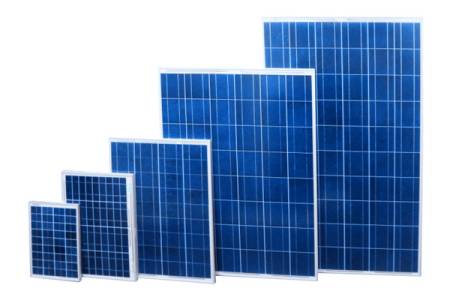Description
Polycrystalline Solar Cells: Reliable & Cost-Effective Solar Power
Polycrystalline solar cells, also known as multicrystalline solar cells, are a popular and cost-effective choice for solar energy generation. Unlike their monocrystalline counterparts, these cells are made from multiple silicon crystals, resulting in a distinct, textured appearance. This manufacturing process is less energy-intensive and uses less pure silicon, leading to lower production costs and making them a more accessible option for homeowners and businesses.
Key Features & Benefits:
- Cost-Effective: Polycrystalline solar panels are generally cheaper than monocrystalline panels due to a simpler and less resource-intensive manufacturing process. This makes them an attractive option for budget-conscious consumers looking for a reliable source of renewable energy.
- High Efficiency: While slightly less efficient than monocrystalline cells (typically ranging from 15% to 17% efficiency), polycrystalline technology still provides a substantial amount of power conversion from sunlight to electricity. Advances in manufacturing continue to improve their efficiency.
- Durable & Reliable: These cells are built to withstand various weather conditions, including extreme temperatures and high winds. They are designed for long-term performance and come with industry-standard warranties.
- Widely Available: Polycrystalline solar panels are readily available from a wide range of manufacturers and suppliers, making them easier to source and install compared to some specialized solar technologies.
- Suitable for Various Applications: Polycrystalline technology is suitable for a broad range of applications, including residential rooftops, commercial installations, and utility-scale solar farms.
How They Work:
Polycrystalline silicon is produced by melting high-purity silicon and allowing it to cool slowly, forming a solid mass with multiple crystals. These crystals are then sliced into wafers, which are further processed to create the solar cells. When sunlight strikes the cells, photons excite electrons in the silicon, generating an electric current. This current is then collected and channeled through an electrical system to power homes, businesses, or feed into the power grid.
Specifications & Considerations:
- Efficiency: Typically 15-17%, slightly lower than monocrystalline cells.
- Appearance: Distinctly textured, blueish-grey appearance.
- Temperature Coefficient: Slightly higher temperature coefficient than monocrystalline cells, meaning their efficiency can decrease slightly more in high temperatures.
- Warranty: Usually come with a 25-year performance warranty and a 10-year product warranty.
Conclusion:
Polycrystalline solar cells offer a compelling balance of cost-effectiveness, reliability, and performance. Their lower price point makes them an accessible choice for a wide range of users seeking to harness the power of the sun and reduce their carbon footprint. While their efficiency may be slightly lower than monocrystalline cells, the overall value proposition makes them an excellent option for many solar energy projects.
